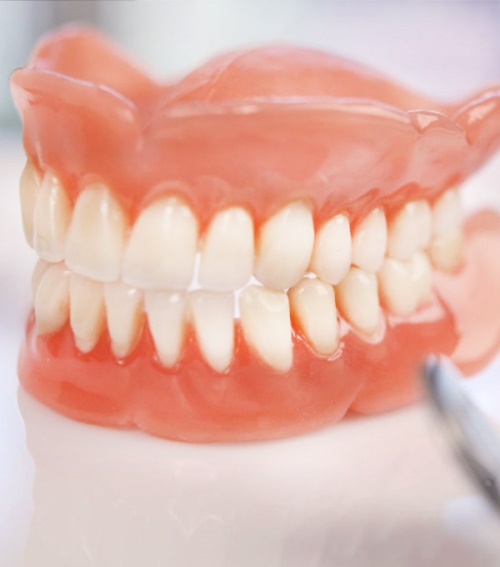
Prosthetic Palate (Total Prosthesis)
People use full or half palate prosthesis to replace their missing teeth and to smile healthily and safely. This type of prosthesis is produced from acrylic (plastic) or metal. The prosthesis called full or full palate is used in cases where the lower and upper jaws are completely toothless, and the prosthesis called partial or half palate is used in cases where some teeth are missing. Half palates are supported by the teeth with the help of a hook or internally connected ball tips.
How Long After My Teeth Have Been Extracted Can I Receive the Removable Prosthesis?
The prosthesis can usually be done immediately after the teeth are extracted. This type of prosthesis is defined as “immediate dentures”. You should visit the dentist before the prosthesis is made so that the necessary measurements and measurements can be taken. After tooth extraction with the help of emergency prosthesis, patients do not remain toothless while their gums heal. However, within the first six months after the teeth are extracted, recession occurs in the bones and gums. If the gums are receded, the adaptation of the emergency prosthesis is impaired and feeding may be required. The predictability of this process depends on the dentist. In some cases, the dentist may recommend the patient to fully heal the gums and extraction spaces. Such a waiting prosthesis provides a much better adaptation. Recovery time may take a long time.
My Pst Palate Prosthesis Fits Very Well, But Why Am I Having Problems With My Lower Palate Prosthesis?
Pst chin palate prosthesis provides better vacuum by getting support from more areas. Tissue support is less in mandibular palate prostheses, and the prosthesis between the tongue and cheek is displaced by moving tissues and its stability is impaired. After a while, the patient will learn the shape of the new palate prosthesis and will determine how it will be fixed in the mouth, even when the mouth is open. In some difficult situations, the patient cannot tolerate the prosthesis for a long time and thinks that the prosthesis is more harmful than beneficial over time. In such cases, implant treatment may be recommended for edentulous patients. Please click for detailed information about dental implants and to make an appointment.
What are the Points I Will Pay Attention to in the Care of Palate Prostheses?
Palatal prostheses can break if you drop them. Always clean the dentures by rubbing them by hand under soapy water or you can remove the deposits on the surface with the help of a clean clean tissue. The general rule of thumb is to brush, wet well and brush again. It is necessary to brush the dentures before soaking so that food residues or debris on the surface are removed. The important thing here is to clean it without applying pressure with the help of a very soft (ultra soft) brush. It should never be brushed vigorously with a hard brush. There are effervescent (foaming and melting) denture cleaner tablets produced by some brands on the market as denture cleaners. These tablets have both cleansing and refreshing effects. In this case, always act in accordance with the manufacturer’s directives. Teeth should be brushed again even if tablet cleaner is used.
What is the Difference Between Metal and Acrylic (Plastic) Half Palate Prostheses?
Acrylic (plastic) prosthetic palates are cheaper to make. However, if they are not designed well, they can damage the teeth in the opposing region. Metal ones are usually obtained from chromium-cobalt alloy and are more durable. They are lighter than acrylic (plastic) dentures and can be supported by natural teeth. Although the base is metal, the gingival area is pink acrylic and the teeth area is natural tooth colored set teeth. It is more expensive than plastic ones.

